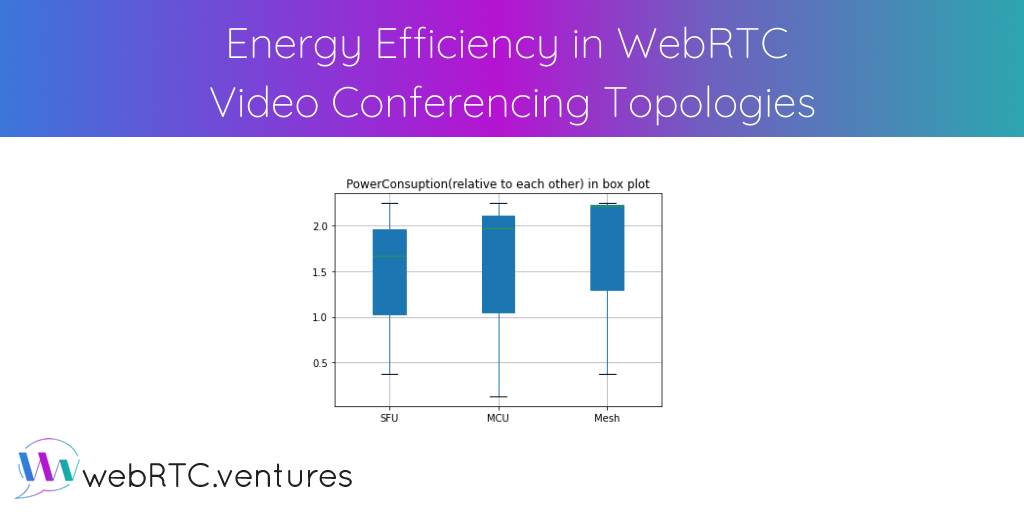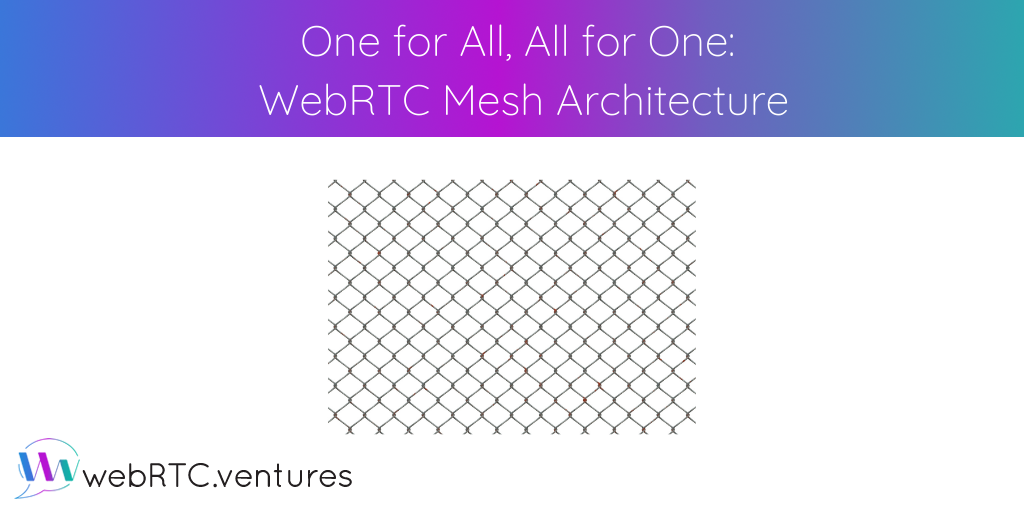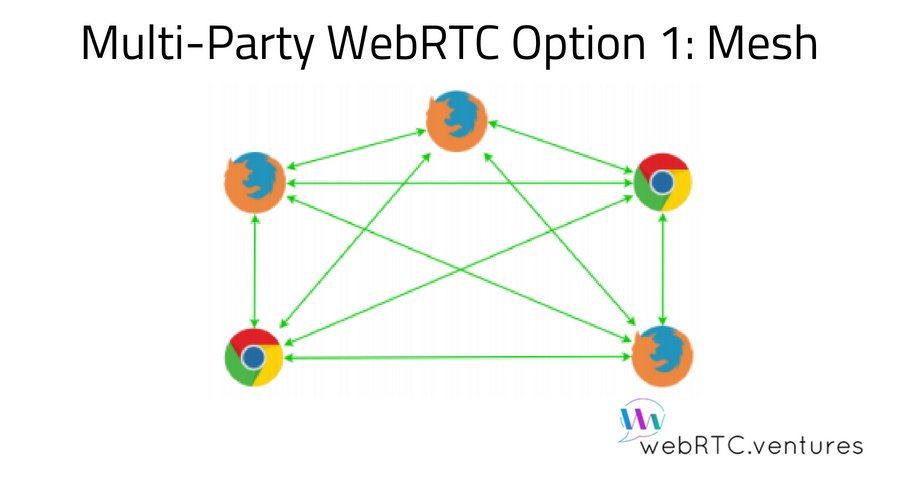
Mesh, MCU, or SFU architectures help scale WebRTC for group calls. There are advantages to each, depending on the use case and concerns around quality, cost, and network congestion. But how does each compare in terms of energy efficiency? In her last post of the series, Altanai Bisht compares server side and client side consumption in these different topologies.

There are a number of strategies available for enabling WebRTC multi-party connections. The most simple choice is Mesh. But only if you don’t need to support more than 3-5 users on the same call and you don’t want a server in the middle. Our DevOps Engineer, Hector Zelaya, explains.

With WebRTC, you have a number of options for adding more than one user to the connection in order to make it a multi-party video call. Mesh is probably the most obvious solution for adding other users to the connection. As you already know, for the connection






